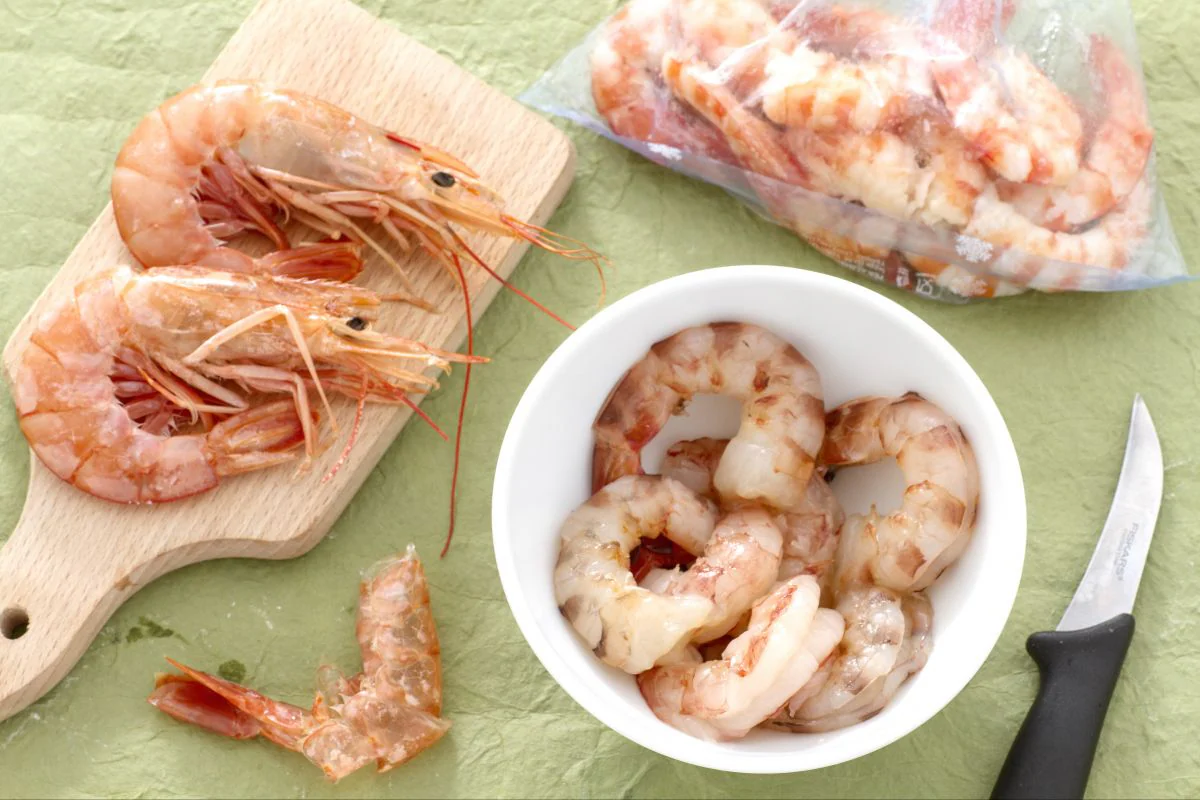How to clean the sea bream
- Average
- 20 min
- Kcal 94

Shrimp is one of the most commonly used crustaceans in the kitchen, prized for its delicate meat. If extremely fresh, it can even be eaten raw, as many Homemade Sushi preparations require the natural use of this ingredient.
There are many varieties available in the market, differing in meat color: white, light red, deep red, and gray.
Although they can be bought year-round, the best months to purchase shrimp are from March to June. If you buy them fresh, make sure the shrimp are alive, and that the eyes, legs, and antennae are mobile. The color should also be vivid and bright.
In this Cooking School guide, we will teach you how to clean and store shrimp. This cleaning method can also be used for prawns, small shrimp, and mantis shrimp.
However, cleaning is not everything. Remember that to achieve delicious shrimp, a very short cooking time is essential; otherwise, the meat will become tough.

To clean the shrimp, first rinse them under running water. Then place them on a cutting board and remove the head (1-2). Still using your hands, remove the legs 3

and the shell 4, which is the armor that protects the meat. Depending on the preparation you intend to make, you can decide whether to leave the tail end or not. Once cleaned externally, proceed with a very delicate operation: removing the internal intestine. Cut the back of the shrimp with a small knife 5 and gently pull it out 6, trying not to break it.

You can also perform this operation with a toothpick: insert it into the shrimp's meat 7, locate the intestine, and pull it out to remove it (8-9).

You can also clean shrimp after cooking: blanch them for a few minutes in boiling water, leave them immersed for 4-5 minutes, and then drain them with a skimmer 10; let them cool for a couple of minutes, and then proceed with cleaning. Remove the head, legs, and shell (11-12), and you can also leave the tail in this case.

Make a cut along the back and remove the intestine using a toothpick or a thin-bladed knife. If extremely fresh, shrimp can be frozen both raw and cooked (13-14): in the latter case, let them cool completely, then place them on a tray and put them in the freezer to freeze 15; once solid, place them in freezer bags and freeze them. When it's time to use them, thaw them in the refrigerator the night before preparing them and remember to cook them briefly, as they have already been cooked!